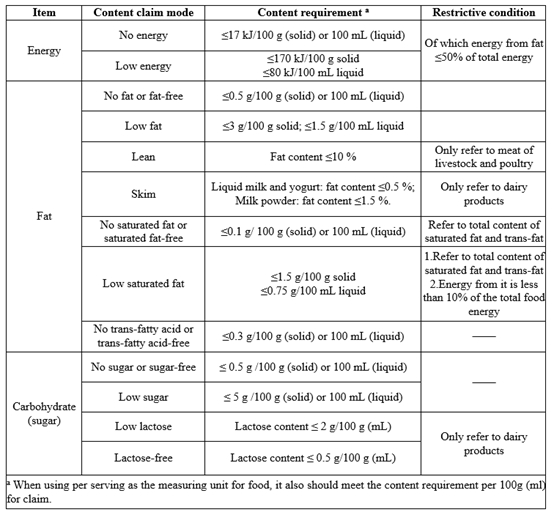From the perspective of regulation and standard, Antion combed and analyzed the requirements of "low sugar, low fat and low calorie", provided in-depth answers to common questions, and aims to help enterprises ensure compliance in product R&D and product labeling claims.
What are the requirements of food claiming “low sugar, low fat and low calorie”?
According to GB 28050-2011 National Food Safety Standard General Rules for the Nutrition Labeling of Prepackaged Foods (hereinafter referred to as GB 28050) has clear requirements for the claims of energy, fat and carbohydrates (sugar), and only foods that meet the requirements for content claims can be claimed in accordance with the prescribed manner. In addition, for fat, it is not only "low" or "none"; for meat, dairy products, etc., the claims such as "lean" and "skim" can also be used; and for saturated fat and trans-fat, under the premise of meeting the requirements of regulations, the claims such as "no" and "low" can also be used. The specific claim requirements and conditions are shown in Table 1.
Table 1 Claim method and requirements for energy, fat and carbohydrates

GB 28050 also requires that in addition to "none", "no", "low", "0", "little", etc. can also be used to express the low content of nutrients. Refer to Table 2 for specific synonyms:
Table 2 Synonym for Nutrient Content Claim

In addition, some merchants compare nutrients with the same type of products. In GB 28050, it is stipulated that when the nutrient meets the requirements of the content claim, nutrient comparative claim can be made, as shown in Table 3. When a certain nutritional component meets the requirements of both nutrient content claim and nutrient comparative claim, both claims can be made, or just nutrient content claim should be made. It is worth noting that the reference food refers to of similar kind or same category that consumers are familiar with and easy to understand, which should meet the following requirements:
1. Foods that are in the same group (or the same class) or similar to the food being compared;
2. Familiar to the public, and the form of existence can be easily and clearly identified;
3. The ingredient being compared can represent the base level of the same group (or the same class) or similar foods, rather than foods with artificially added or reduced level of an ingredient. For example, skim milk cannot be used as a reference food to compare the fat content of other milk.
Table 3 Requirements and conditions for comparative claim

Conclusion
Antion prompts merchants to ensure compliance with language and labeling when making claims on products. Antion also reminds consumers that when choosing foods, they can check the ingredients list of the product to determine whether it meets their requirements.
Source: Antion
Note: This article is compiled by Antion, please indicate our source if reprint it.